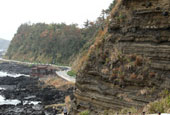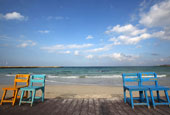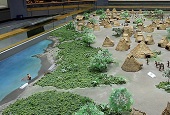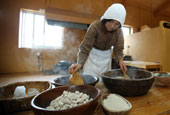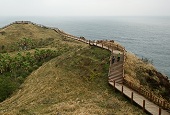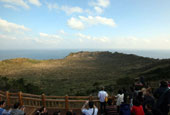Each place has its own native dishes or local foods, depending on the characteristics of the region. Some of them cannot be found elsewhere and may vary depending on the season.
Jeju Island, a popular tourist destination for international and domestic tourists alike, as an island and, in addition, as a volcanic island, has its own vast array of local delicacies. For this reason, many of its specialties cannot be found or eaten on mainland peninsular Korea. In the past, Jeju locals were unable to produce enough rice, as the soil was barren due to geological reasons stemming from volcanic activity. However, they were able to feed themselves and develop their own cuisine thanks to abundant seafood and alternative crops.
Like many regions of Korea, Jeju Island has its own seasonal foods. The hallabong, a type of tangerine with a protruding stem, is eaten from December to March. Saw-edged perches, or dageumbari, and sea urchins are caught in May and June. Mitra squid (hanchi) is in season between June and August. Yellow tail, or bangeo, is in season from November to February. Jeju Island satiates tourists’ appetites even in late November, a time marking early winter, a season bountiful with recipe ingredients.
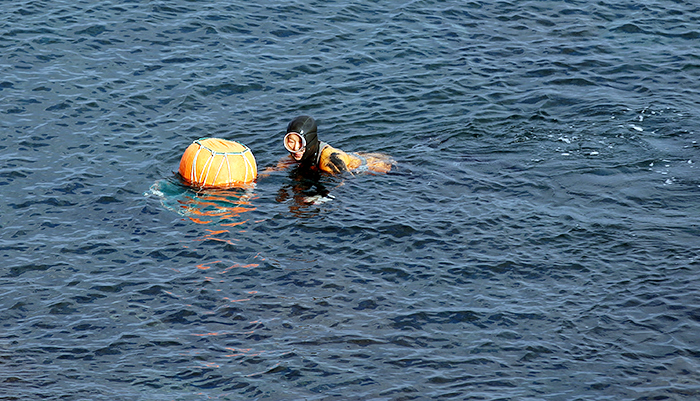
A female diver (haenyeo) collects seafood from the ocean. The collected seafood, including seaweed, fish and shellfish, is recognized as being of the best quality, even on Jeju Island.
When thinking of Jeju Island, one of the first things that comes to mind is the female divers, or haenyeo. The taste of seafood collected by them delivers not only the freshness of the food itself but also the liveliness of the sea.
Among their catch, a food that can only be eaten on Jeju Island is obunjagi, a close relative of the abalone family. Obunjagi look like abalones and have a similar taste, but they are smaller and have a slightly more bitter taste. It is cooked in various ways. It can be eaten raw, steamed, roasted or boiled in a stew. Obunjagi is considered a delicacy and people have to check with the restaurant in advance if they want to order an obunjagi dish.
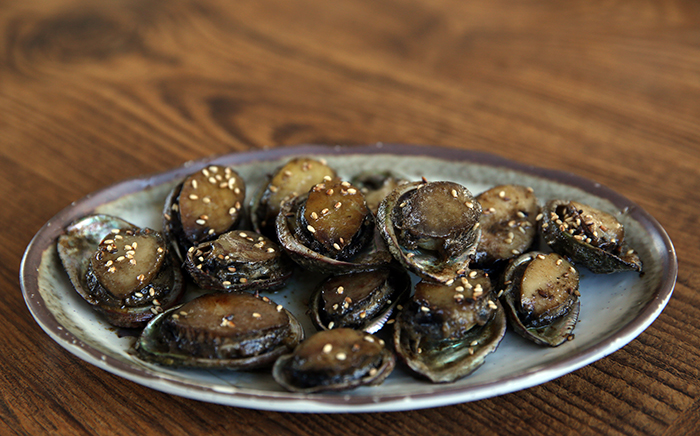
Obunjagi, a type of small abalone, is called tteokjogae in the Jeju dialect. It's popular among foodies thanks to its unique taste. The above photo shows roasted obunjagi.
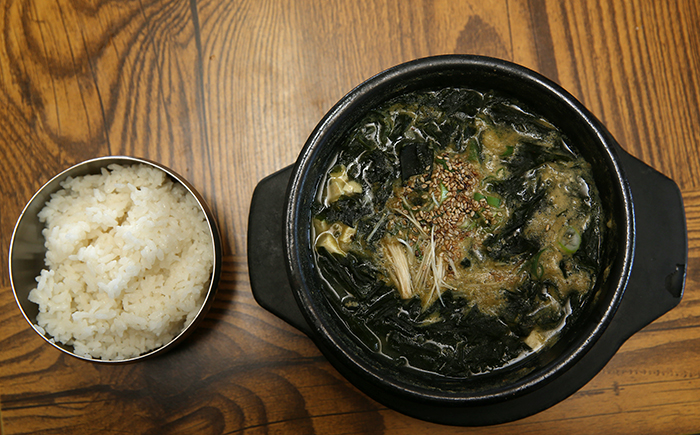
Sea urchin and seaweed soup, or seongge miyeokguk, is one of the favorite dishes among sightseers on Jeju Island.
Sea urchin and seaweed soup, or seongge miyeokguk, and abalone dishes also offer a chance to taste the singular taste of Jeju. Sea urchin and seaweed soup has a clean, slightly nutty and sweet flavor thanks to the seaweed gathered from the ocean. This is enough to make people finish a bowl of rice without resorting to any other side dishes.
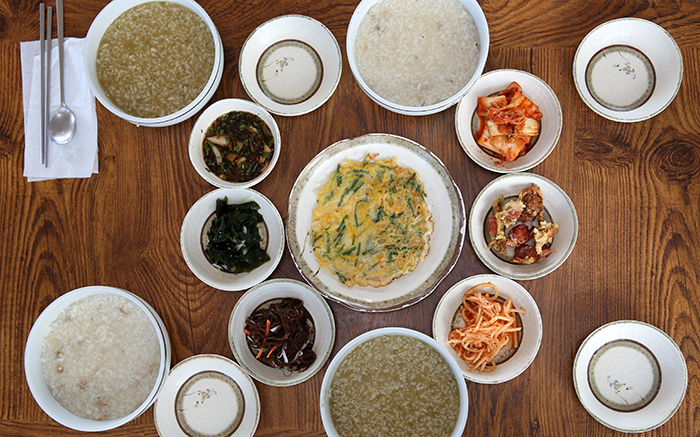
Abalone rice porridge (jeonbokjuk) and clam rice porridge (jogaejuk) are made from traditional and natural food ingredients.
Even the rice porridge surprises everyone. Normally, it is not easy to find an original-style rice porridge with natural ingredients fresh from the sea. The range of ingredients, however, from big abalones to clams, makes people forget that they're eating rice porridge.
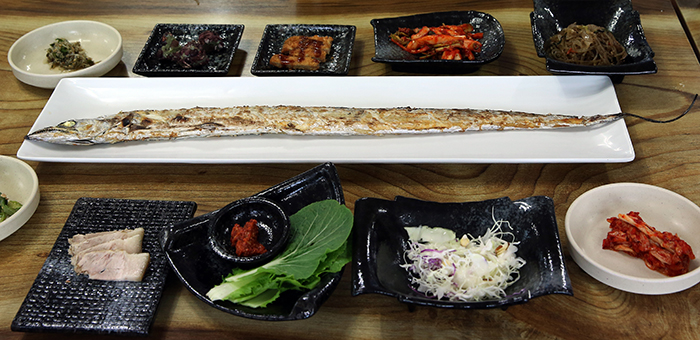
The best oarfish, or eungalchi, in the world comes from Jeju Island. One high-quality oarfish can fetch over KRW 500,000.
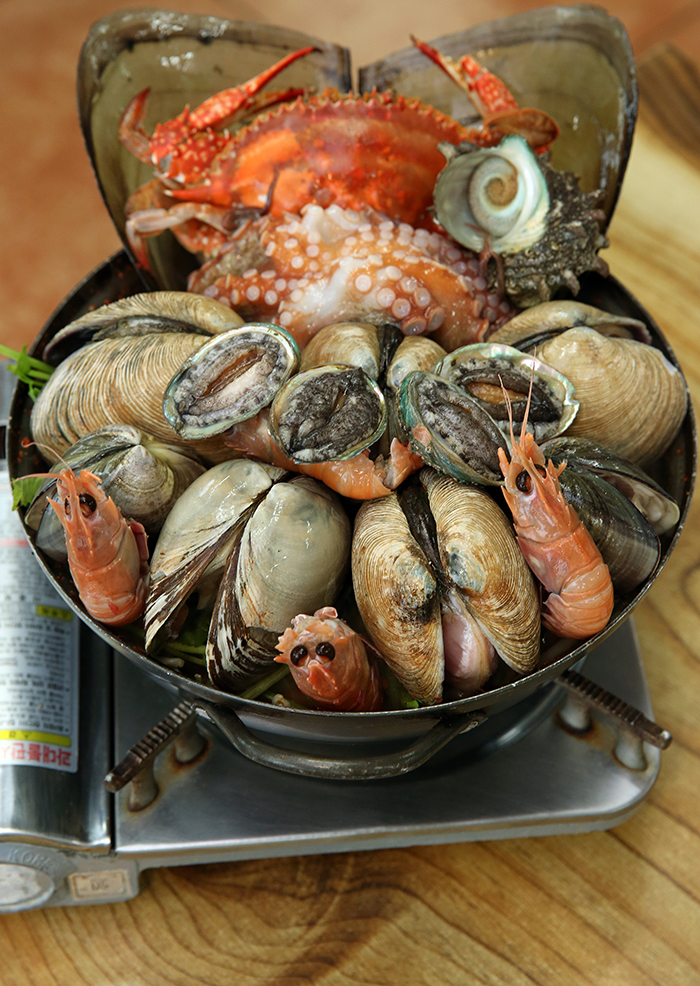
A seafood steamboat, made with shellfish collected by the female divers offshore, offers the original taste and smell of the ingredients. The soup also has a wonderfully harmonized taste.
Among seafood dishes, some of the most enjoyable cuisine that pleases both the mouth and eyes is the oarfish, or galchi, and seafood steamboats or hot pots (haemultang). Grilled oarfish, laid down in a long line as if the table isn't big enough, offers both clean meat and a sweet taste. A variety of seafood and shellfish fills a steaming pot, filled to the brim, for the seafood steamboat offered with the grilled oarfish. Some 20 kinds of seafood, including scampies (ttaksaewu), various clams, crab and octopus, deliver the taste and smell of each ingredient. Noodles are added to the steamboat for the finish, causing diners to grab their chopsticks until the end, even as their stomachs get fuller and fuller.
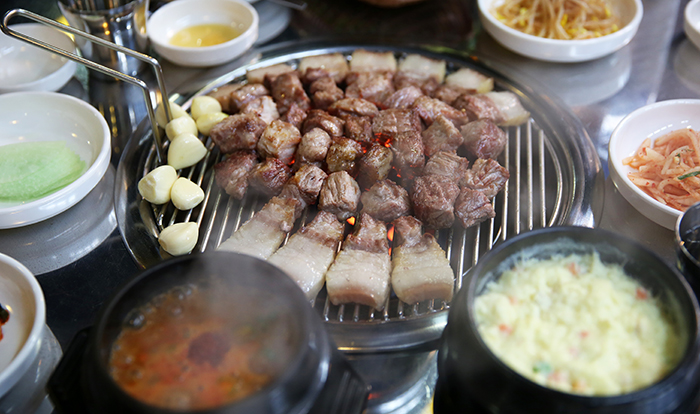
Roasted Jeju pork offers a chewy and clean meaty taste with little fat. This is one of the must-have dishes on Jeju Island.
Other must-have dishes on Jeju Island, apart from the seafood, are horse and pork dishes. Koreans used to say in the past that, “People should be sent to Hanyang [an old name for Seoul] and horses should be sent to Jeju Island.” As the saying goes, Jeju Island has the most suitable conditions in Korea to raise horses. Though horse meat is considered a local delicacy of the island, pricewise it is not available for many people. Pork dishes, on the other hand, are less expensive and are considered a must-eat dish for many gourmets who visit the island. To be honest, there is no special recipe or ingredient to the pork dishes of Jeju Island. It's just that, unlike other breeds of pig, Jeju pork has less fat, firmer meat and a chewier taste, which pleases many people.
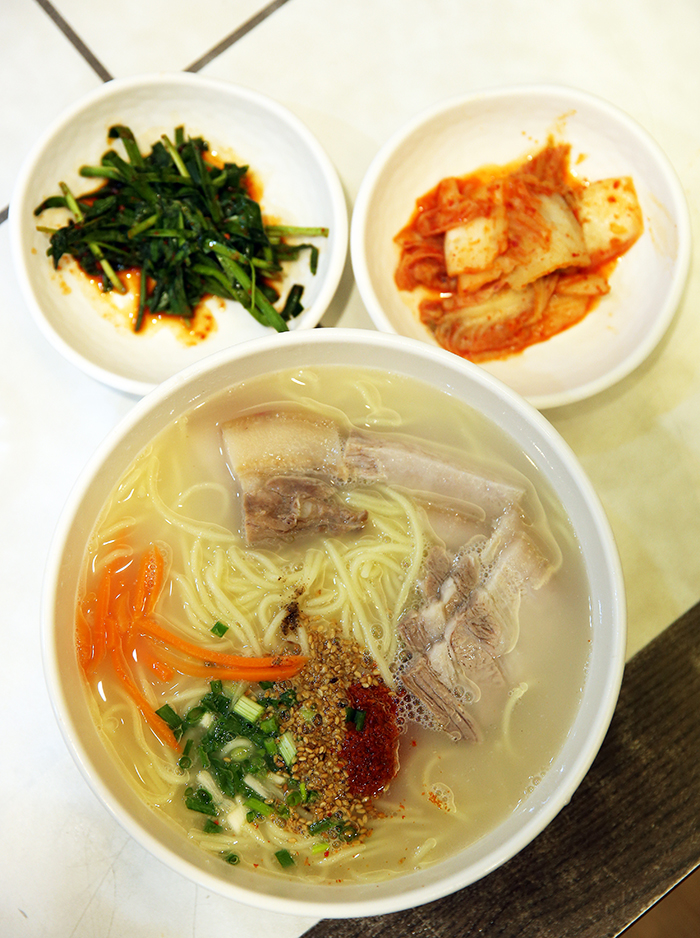
Soup with noodles and pork, or gogi guksu, is so popular among travelers to Jeju Island that a whole street is filled with single-dish soup restaurants that serve the delicacy.
Another Jeju pork dish to taste is a soup with noodles and pork, or gogi guksu. This soup is made with pork stock of Jeju pork with pieces of steamed Jeju pork. It has a clean meaty taste without the smell of pork fat. This soup, which Jeju people have eaten for about 100 years, is also called "janchi guksu," or, "the soup with noodles for a party," as it is often served to wedding guests on the island. Restaurants specializing in this noodle pork dish can be found along a special "guksu golmok," or, "broth alley," in Jeju City. Some of them are open around the clock, as people love to visit late at night for their midnight snack.

Deputy Director Eric Seo of the Jeju Tourism Organization explains the tourist attractions and cuisine of Jeju Island.
Director Eric Seo of the Jeju Tourism Organization said, “Most of the restaurants on Jeju Island are so generous they offer a tangerine or gyul for free to their customers. Local dishes from Jeju Island are varied and have a great range of tastes, as they are made from food ingredients grown and harvested from the clean soil and water of Jeju Island.”
“If you visit Jeju for a specific in-season food-themed festival, you can have a great time here,” he added.
Article by Jeon Han, Yoon Sojung
Photos: Jeon Han
Korea.net Staff Writers
hanjeon@korea.kr
